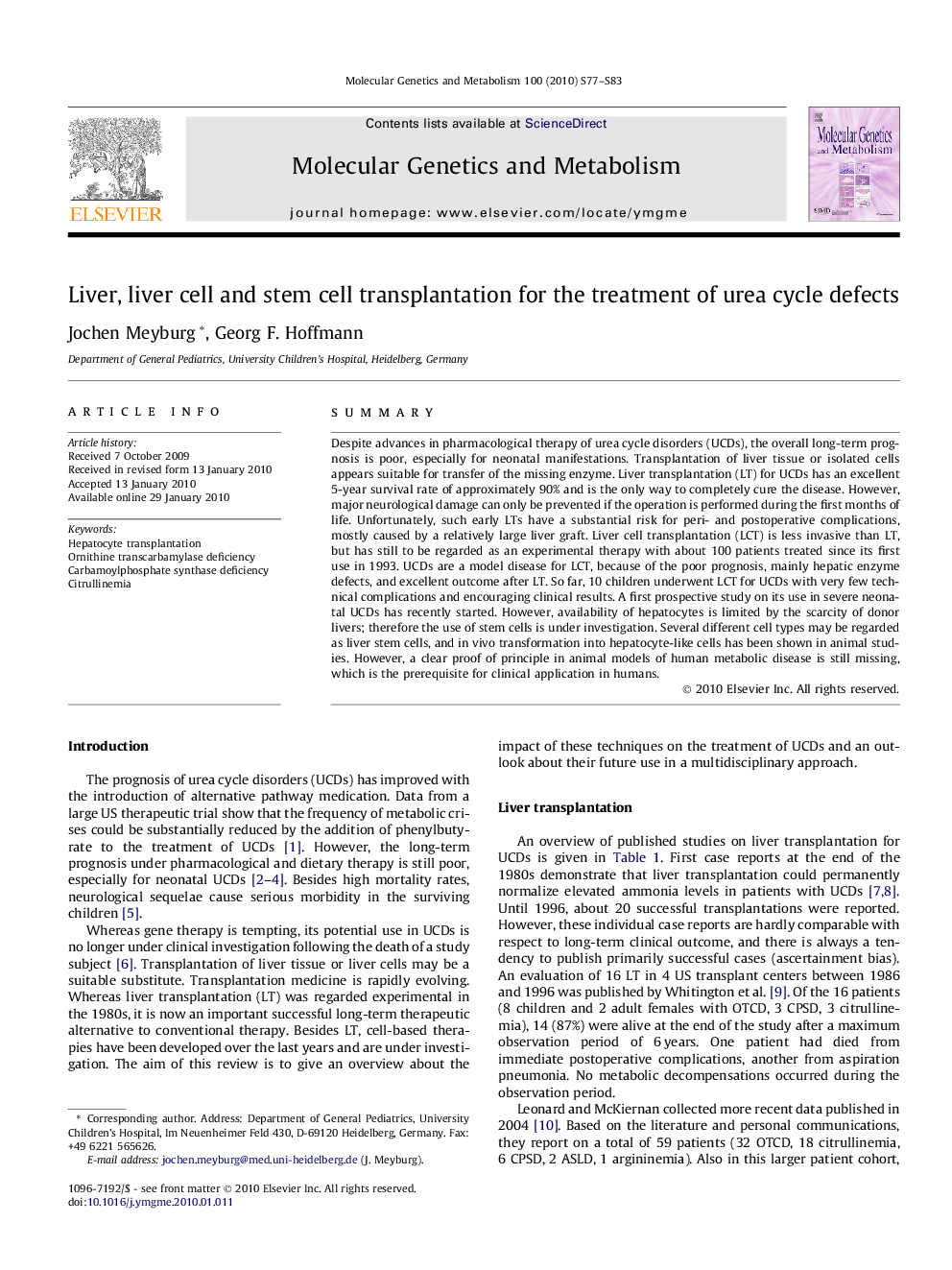| Article ID | Journal | Published Year | Pages | File Type |
|---|---|---|---|---|
| 1999596 | Molecular Genetics and Metabolism | 2010 | 7 Pages |
SummaryDespite advances in pharmacological therapy of urea cycle disorders (UCDs), the overall long-term prognosis is poor, especially for neonatal manifestations. Transplantation of liver tissue or isolated cells appears suitable for transfer of the missing enzyme. Liver transplantation (LT) for UCDs has an excellent 5-year survival rate of approximately 90% and is the only way to completely cure the disease. However, major neurological damage can only be prevented if the operation is performed during the first months of life. Unfortunately, such early LTs have a substantial risk for peri- and postoperative complications, mostly caused by a relatively large liver graft. Liver cell transplantation (LCT) is less invasive than LT, but has still to be regarded as an experimental therapy with about 100 patients treated since its first use in 1993. UCDs are a model disease for LCT, because of the poor prognosis, mainly hepatic enzyme defects, and excellent outcome after LT. So far, 10 children underwent LCT for UCDs with very few technical complications and encouraging clinical results. A first prospective study on its use in severe neonatal UCDs has recently started. However, availability of hepatocytes is limited by the scarcity of donor livers; therefore the use of stem cells is under investigation. Several different cell types may be regarded as liver stem cells, and in vivo transformation into hepatocyte-like cells has been shown in animal studies. However, a clear proof of principle in animal models of human metabolic disease is still missing, which is the prerequisite for clinical application in humans.
